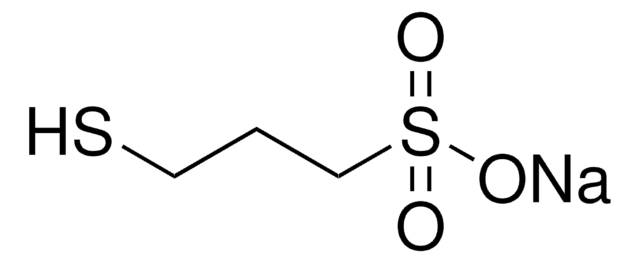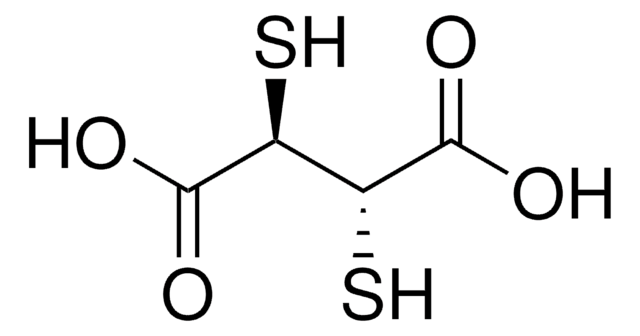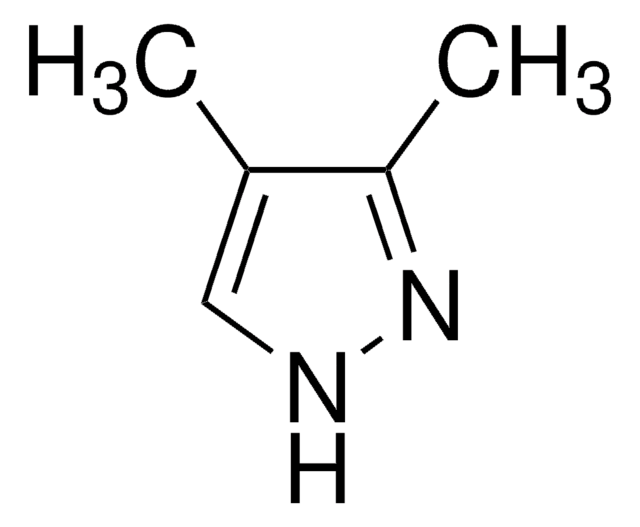Key Documents
D8016
Sodium 2,3-dimercaptopropanesulfonate monohydrate
95%
Synonim(y):
2,3-Dimercaptopropanesulfonic acid sodium salt monohydrate, DMPS
About This Item
Polecane produkty
opis
zwitterionic
Poziom jakości
Próba
95%
Postać
powder
masa cząsteczkowa
228.29 g/mol
mp
215 °C (dec.)
temp. przechowywania
2-8°C
ciąg SMILES
O.[Na+].[O-]S(=O)(=O)CC(S)CS
InChI
1S/C3H8O3S3.Na.H2O/c4-9(5,6)2-3(8)1-7;;/h3,7-8H,1-2H2,(H,4,5,6);;1H2/q;+1;/p-1
Klucz InChI
XMUHNMQFDVIWGU-UHFFFAOYSA-M
Szukasz podobnych produktów? Odwiedź Przewodnik dotyczący porównywania produktów
Powiązane kategorie
Opis ogólny
Zastosowanie
Kod klasy składowania
11 - Combustible Solids
Klasa zagrożenia wodnego (WGK)
WGK 3
Temperatura zapłonu (°F)
Not applicable
Temperatura zapłonu (°C)
Not applicable
Środki ochrony indywidualnej
Eyeshields, Gloves, type N95 (US)
Certyfikaty analizy (CoA)
Poszukaj Certyfikaty analizy (CoA), wpisując numer partii/serii produktów. Numery serii i partii można znaleźć na etykiecie produktu po słowach „seria” lub „partia”.
Masz już ten produkt?
Dokumenty związane z niedawno zakupionymi produktami zostały zamieszczone w Bibliotece dokumentów.
Klienci oglądali również te produkty
Nasz zespół naukowców ma doświadczenie we wszystkich obszarach badań, w tym w naukach przyrodniczych, materiałoznawstwie, syntezie chemicznej, chromatografii, analityce i wielu innych dziedzinach.
Skontaktuj się z zespołem ds. pomocy technicznej











